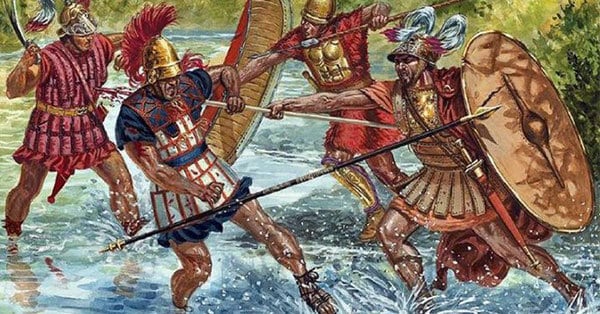Also known as the Third Celtiberian War, the Numantine War (143 – 133 BC) was a 10-year long conflict between Rome and the tribes near the River Ebro. Their enemies included the Lusones, Vettones, Vaccaei and the Arevaci. Technically speaking, the war began in 154 BC as the Second Celtiberian War, but this phase ended in 151 BC only to flare up again in 143 BC.
The aforementioned tribes were collectively known as the Celtiberians, and their first rebellion against Rome began in 181 BC and ended two years later. After the end of the Second Punic War in 201 BC, the Carthaginians had to cede control of its Spanish territories to Rome. This new province shared its border with the Celtiberians and confrontations between the two groups led to the First Celtiberian War in 181 BC.
Rome was victorious and signed various peace treaties to keep the region quiet for almost quarter of a century. However, in 154 BC, a Belli town called Segeda built a circuit of walls which angered the Romans and led to the Second Celtiberian War. Rome won again, but it didn’t take long for trouble to return. In 147 BC, the Lusitanian’s rebelled in the Virathic War and their leader, Viriathus, incited the Celtiberians to rebel once again in 143 BC.

1 – Rome Is Almost Defeated (143 – 138 BC)
Viriathus was easily able to convince the Celtiberians to rebel because he enjoyed initial success in his own war. They broke into rebellion in 143 BC in a war that lasted for a decade and was mainly centered on Numantia. The location of the city made it difficult to penetrate as it was located on a hill at the junction of two rivers and surrounded by forest. The population of Numantia spread beyond its walls, and while their civilization was backward compared to the Romans, they did possess excellent iron weapons.
Rome was clearly intent on suppressing the enemy as soon as possible and sent several generals of varying degrees to competence to Numantia. Quintus Caecilius Metellus Macedonicus was one of the better quality generals although he failed in his attempt to take the city by siege. He managed to conquer the Jalon Valley tribes and advanced north against the Vaccaei. It was a clever ploy as it helped cut off the enemy’s source of supplies in 142 BC.
However, all of his good work was undone by the ineptitude of his successor, Quintus Pompeius, who brought an army of 30,000 men to the walls of Numantia. Even though the city was only defended by 8,000 men, Pompeius failed miserably in the siege and was forced to retreat. After seeing his army dwindle by the day, the commander decided that Termantia was an easier target. Again, he failed in his mission to take the town and lost an estimated 700 men in the process according to Appian.
Pompeius turned his attention to the small town of Malia which he managed to take with the help of treachery. He then devised a plan to take Numantia; he wanted to change the course of the nearest river to the city to starve the population. Although it was a good idea, in theory, it didn’t work in practice as the Numantines harassed the Romans as they worked and killed hundreds of men as they dug trenches.
If Pompeius thought things couldn’t get any worse, he was mistaken. Counselors arrived from Rome with a group of raw, inexperienced recruits and ordered Pompeius to train and use them over the winter. The new recruits were unused to the climate and water of a new country. Add in the lack of shelter, and you had a recipe for disaster which came in the form of dysentery. The outbreak of the disease killed hundreds of men and weakened many more. The Romans endured further misery when a Numantine ambush killed hundreds of soldiers.
By now, Pompeius was fed up with the situation and expected to be replaced in spring. He feared punishment for his failures and attempted to make peace with the enemy to bring the war to a swift conclusion in 139 BC. The Numantines were open to the suggestion as they too had lost thousands of people to war and famine. Publicly, Pompeius ordered the Numantines to surrender, but privately, he negotiated entirely different terms. Eventually, they came to an agreement whereby the Numantines paid 30 talents of silver, hostages, deserters and prisoners. It appeared as if Pompeius would emerge with his reputation intact, but his plan was foiled at the last minute.

